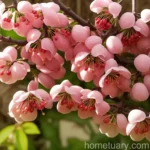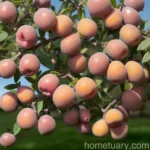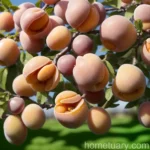Cherry Laurel (Prunus caroliniana): A Comprehensive Guide
Cherry Laurel, scientifically known as Prunus caroliniana, is a versatile plant with a wide range of uses, from landscaping to medicinal purposes. This evergreen shrub is valued for its lush foliage, fragrant flowers, and adaptability to various growing conditions. In this comprehensive guide, we will explore the culture, uses, care, and maintenance of cherry laurel, as well as common diseases and pests that affect this plant. Whether you’re a gardener, landscape designer, or simply an enthusiast of botanical diversity, this guide aims to provide everything you need to know about the cherry laurel plant.
What is Cherry Laurel (Prunus caroliniana)?
Cherry Laurel, a member of the Rosaceae family, is a species of flowering plant native to the southeastern United States, specifically in regions such as Florida, Texas, and North Carolina. It is commonly known by various names, including ‘Carolina laurelcherry,’ ‘Carolina cherry laurel,’ and ‘Laurel cherry.’ This species is distinct for its glossy, dark green leaves, small white flowers, and dark black fruit that resembles cherries, although it is not related to the true cherry (Prunus avium).
Cherry Laurel is valued for its ornamental characteristics and is popularly used in landscaping due to its dense foliage, which provides excellent privacy screening when cultivated as a hedge. Additionally, the plant has been utilized for its aromatic properties and even in traditional medicine.
Key Takeaways – Cherry Laurel (Prunus caroliniana)
Before delving into the specifics of cherry laurel care and cultivation, let’s highlight key takeaways about this plant.
- Scientific Name: Prunus caroliniana
- Common Names: Cherry Laurel, Carolina laurelcherry, Carolina cherry laurel, Laurel cherry
- Plant Type: Evergreen shrub or small tree
- Native Habitat: Southeastern United States
- Notable Features: Glossy, dark green leaves, small white fragrant flowers, black cherry-like fruit
- Uses: Landscaping, privacy screening, medicinal purposes
Cultivation
Water
Cherry laurel is adaptable to various levels of soil moisture, although it generally prefers moist, well-draining soil. During the plant’s establishment phase, regular watering is essential to ensure proper root development. Once established, cherry laurel demonstrates good tolerance to dry conditions, making it suitable for regions with minimal rainfall.
Sunlight
This evergreen shrub thrives in full sun to partial shade. While it can tolerate shade, cherry laurel will exhibit its best growth and flowering when planted in areas with ample sunlight.
Fertilizer
When it comes to fertilization, cherry laurel generally responds well to balanced, slow-release fertilizers. Applying a complete fertilizer in the early spring, prior to the growing season, can provide the necessary nutrients for healthy growth and development.
Soil
Cherry laurel is relatively adaptable to different soil types, including sandy, loamy, or clay soils, as long as they are well-draining. However, it prefers slightly acidic to slightly alkaline soil pH levels ranging from 6.0 to 7.5. Amending the soil with organic matter can improve its texture and fertility, promoting optimal growth of the plant.
Pruning
Pruning is an essential aspect of cherry laurel maintenance, particularly when shaping the plant for hedges or maintaining a desired form. Regular pruning can help promote dense foliage and vibrant growth, as well as remove dead or diseased branches. It is recommended to prune cherry laurel in the late winter or early spring before the onset of new growth.
Propagation
Cherry laurel can be propagated through various methods such as seeds, cuttings, or layering. Softwood cuttings taken in late spring to early summer can yield successful results, as they root relatively easily under favorable conditions. Layering, which involves encouraging stems to produce roots while still attached to the parent plant, is another effective propagation method for cherry laurel.
Container Popularity
While cherry laurel is commonly planted in garden beds or as hedges, it is also well-suited for container cultivation. The plant’s lush foliage and adaptability to different light conditions make it an attractive choice for container gardening, providing an evergreen accent to outdoor spaces, patios, or balconies.
Common Diseases
Cherry laurel is generally resilient to most diseases, but it can occasionally be affected by certain fungal pathogens and environmental stressors. Common diseases that may impact cherry laurel include:
- Shot Hole Disease (Wilsonomyces carpophilus): This fungal disease causes small round spots or “shot holes” on the plant’s leaves, leading to defoliation in severe cases.
- Root Rot (Phytophthora spp.): Excessive soil moisture can create favorable conditions for root rot pathogens, leading to root damage and overall decline of the plant.
- Leaf Spot: Fungal leaf spot diseases, such as Cercospora leaf spot and Entomosporium leaf spot, can manifest as dark spots on the leaves, affecting the plant’s aesthetic appeal.
Disease Diagnosis
Diagnosing diseases in cherry laurel involves careful observation of symptoms such as leaf spots, wilting, or abnormal discoloration. Additionally, it is crucial to consider environmental factors and cultural practices that may contribute to disease development. If disease symptoms are detected, it is advisable to consult with a plant pathologist or local agricultural extension service for accurate diagnosis and appropriate management strategies.
Common Pests
Cherry laurel is relatively resistant to most pest infestations, but it can be susceptible to certain insect pests. Common pests that may affect cherry laurel include:
- Scale Insects (Pseudaulacaspis spp.): Scale insects can infest cherry laurel, feeding on its sap and causing damage to the foliage.
- Caterpillars (Lepidoptera): Certain caterpillar species, such as the cherry scallop shell moth (Hydria prunivorata), may feed on the leaves of cherry laurel, impacting its overall health.
Botanist’s Tips
As a botanist, there are several tips and recommendations that can contribute to successful cultivation and care of cherry laurel. These include:
- Regular Monitoring: Periodic monitoring of the plant for signs of pests, diseases, or nutrient deficiencies can facilitate early intervention and maintenance of plant health.
- Appropriate Pruning Techniques: Adhering to proper pruning practices, such as using sharp, clean tools and making clean cuts, can promote optimal healing and minimize the risk of disease transmission.
- Soil Moisture Management: Balancing soil moisture levels and avoiding waterlogged conditions can help prevent root diseases and maintain overall vigor of the plant.
Fun Facts
In addition to its practical uses and cultivation considerations, cherry laurel possesses several intriguing and lesser-known facts:
- The leaves and seeds of cherry laurel contain cyanogenic compounds, which can release toxic hydrogen cyanide when ingested. As a result, caution should be exercised when planting cherry laurel in areas frequented by children or pets.
- The plant’s fragrant white flowers, which bloom in clusters, serve as a valuable nectar source for pollinators such as bees and butterflies, contributing to ecological diversity.
- Cherry laurel has historical significance, with Native American tribes reportedly using parts of the plant for medicinal purposes, such as treating sore muscles and relieving respiratory discomfort.
Links to External Resources
For further exploration of cherry laurel cultivation, gardening enthusiasts and botanists can benefit from accessing reputable external resources. Here are some recommended external links for comprehensive information on cherry laurel:
- The American Society for the Prevention of Cruelty to Animals (ASPCA) Guide to Toxic and Non-Toxic Plants
- University of Florida IFAS Extension – Cherry Laurel for Central Florida
- North Carolina State University Extension – Prunus caroliniana
Conclusion
Cherry laurel (Prunus caroliniana) stands out as a versatile and resilient plant, offering a multitude of practical, aesthetic, and ecological benefits. Whether utilized for landscaping, privacy screening, or as a source of nectar for pollinators, cherry laurel embodies the adaptability and beauty of native plant species. By understanding the cultural requirements, potential challenges, and best practices for maintenance, individuals can cultivate healthy and thriving cherry laurel specimens, contributing to the richness of botanical diversity.
Through this comprehensive guide, we aim to provide valuable insights into the world of cherry laurel, empowering enthusiasts and horticulturalists alike to appreciate and cultivate this remarkable plant.
As in any scientific endeavor, continuous learning and exploration are essential, and we encourage readers to further engage with reputable sources and organizations to deepen their understanding of cherry laurel and its role in the botanical realm.















